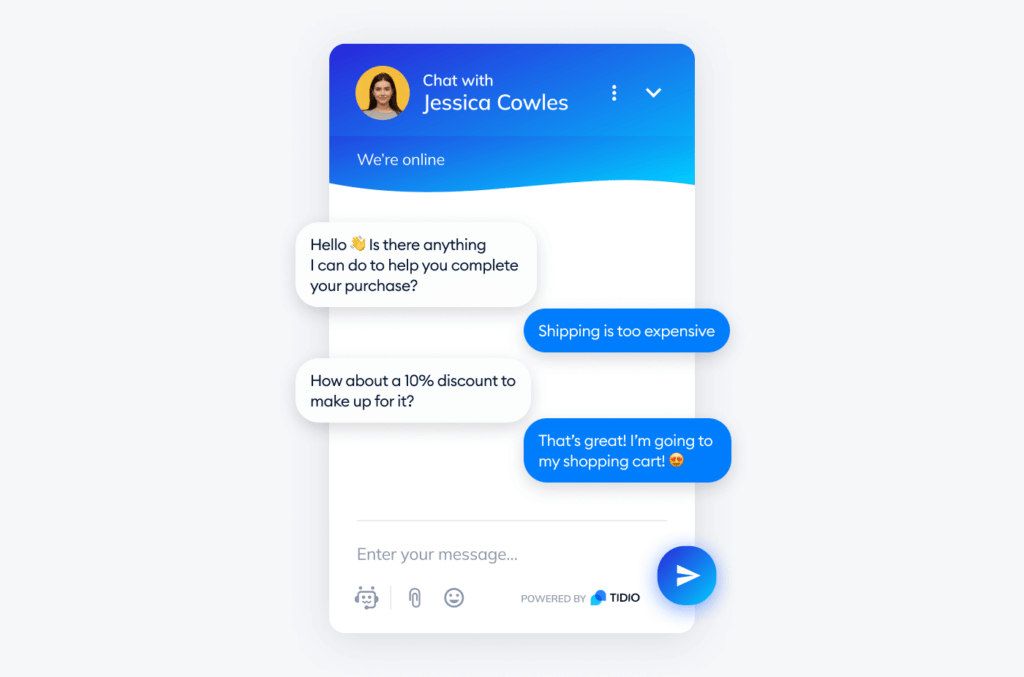Repeat Customers: How to Keep Your Customers Coming Back For More

For ecommerce brands looking to grow revenue and improve core metrics like average customer value (ACV) and customer retention rate, nothing is more important than repeat buyers.
Repeat buyers enhance the value you get from customer acquisition costs, make larger purchases per transaction, and help attract new customers to your business via referrals.
No two ways about it—repeat customers bring more value to your brand than a new one.
But how do you actually convert those first-time buyers into loyal, repeat customers?
In this guide, we’ll walk you through eight powerful strategies you can implement today, each of which will help you influence repeat sales and convert new customers into repeat buyers.
#cta-visual-pb#<cta-title>Design a compelling product page<cta-title>DIY your ecommerce product page design with the best drag-and-drop page builder for Shopify and BigCommerce.
Start designing for free
8 strategies for turning first-time buyers into repeat customers
Wondering how to encourage repeat customers? Dive into these eight powerful strategies for converting first-time buyers into loyal customers.
Table of Contents
1. Kickstart your loyalty program
Is there a better way to encourage customers to purchase from you again than rewarding them for doing it?
Customer loyalty programs allow buyers to collect points for every purchase and use them to earn rewards like free products or exclusive discount codes.
Check out this example from Jimmy Joy:

This is the perfect example of a successful loyalty program, as it’s highly gamified.
As customers purchase additional products, they move through different tiers, such as ‘Time Traveler,’ which affords them various benefits.
These benefits improve as the buyer progresses through the levels, meaning the incentive to continue purchasing continues to increase.
Moreover, Jimmy Joy encourages customers to sign up before making their first purchase by having this pop-up box front and center on the homepage. This way, buyers can start earning points immediately, a great way to encourage a second purchase.
A good practice here is to design the program so new customers can reach their first reward easily (after just one or two more repeat purchases), as this will maximize initial engagement with the program.
Platforms like LoyaltyLion are an excellent choice for building high-performing loyalty programs and reporting on and monitoring their success.
2. Take product complaints seriously
A complaint can spell the end of a customer relationship. Do what you can to resolve them to keep that loyal customer.

This advice should be implemented across a wide range of complaints, even some that might seem less than reasonable on the customer’s part.
The reason is simple.
Unresolved dissatisfaction can lead customers to stop purchasing and spread negative online reviews, harming your brand’s reputation. It’s crucial to promptly address their issues and take the necessary actions to restore their satisfaction.
Occasionally, accepting blame and providing a replacement, a discount code, or a similar fix can smoothly turn a disgruntled customer’s experience around, even if there was a minor bump in the road.
3. Provide superior customer service
Remember when you enjoyed a fantastic pre-sale experience, only for the company to seem indifferent once they charged your credit card?
Avoid making that impression by focusing on after-sales service and communication, intending to make customers feel valued and make sure the purchase experience is consistent and seamless right through delivery.
Small concessions like the below example from Olark can be a great way to kick things off.

Once the sale has gone through, don’t make the mistake of turning to a passive approach to customer service.
Stay active and drive the conversation by:
- Providing shipping updates and notifications
- Reaching out to the customer after delivering the product to ensure their satisfaction with the purchase.
- Prioritizing customer support response times for recent buyers
- Making it easy for buyers to talk to a human (nobody likes having to battle against a chatbot or search through pages of FAQs)
4. Launch a referral program
Thinking about launching a referral program? Great! It should go hand-in-hand with your loyalty scheme (which you’ve already got up and running, right?).
Referral programs aren’t just about reaching new customers—they also encourage repeat purchases, all thanks to the principle of commitment.

When a customer recommends your brand to a friend, they’re essentially saying, “This is a brand I trust,” creating a mental allegiance to your brand.
Here’s the kicker: people strive for consistency.
So, once they’ve vouched for a brand, they’ll stick to it for future shopping. After all, it wouldn’t make sense to rave about a brand and then not buy from it, right?
Now, let’s sweeten the deal with an economic incentive. Say, customers get a 20% discount code when they bring a friend on board.
This excites both the new buyer and the existing customer to make a purchase.
And as for the how? Platforms like Yotpo are perfect for setting up referral programs and getting the most out of them.
5. Fine-tune your email automation sequences
Use email, a staple in the ecommerce marketing toolkit, intentionally. Aim each email campaign at a specific, desired goal.
Let’s say your primary objective is to create repeat customers (that’s why you’re reading this post, right?).
In this case, you want to design an email sequence specifically for first-time buyers with the express intention of converting that second purchase.
Therefore, we trigger the campaign immediately following the initial purchase, potentially timing it for after the product’s delivery to capitalize on the customer’s moment of satisfaction.
One of the best ways to encourage a repeat purchase is to offer a little freebie with their next purchase, like this offer from Zoes Kitchen.

Email marketing, especially with platforms like Klaviyo, is key to conversion.
#cta-paragraph-pb#With Shogun’s seamless integration with Klaviyo, email capture, and campaign creation become easy, promoting repeat purchases and business growth.
6. Use customer data to create contextual offers
Basic and non-personalized “want to shop again?” emails won’t cut it.
If you’ve got any kind of info on your customers (like what they bought last time), your best shot at cutting through in a noisy inbox is to provide a context offer.
Consider this email from Chewy.

A personalized email promotes a product the customer has already purchased in the past and is likely to buy again.
A small discount helps encourage a purchase now (it doesn’t need to be huge, as Chewy already knows this product is of interest).
You can time your email sends to maximize impact based on consumption patterns.
For example, if you know that a 30-lb bag lasts, say, 60 days, then you might schedule the email to go out 45 days after the previous purchase arrives.
Pro tip: Try your hand at SMS marketing for such offers, as it’s generally considered a more personal medium and less saturated with marketing offers.
7. Get active on social media
Social media is pretty much a non-negotiable when it comes to ecommerce marketing strategies, but that doesn’t mean you have to stick entirely to ads.

In fact, if your goal is to drive more sales from regular customers, then driving up a following and posting organically on a consistent basis is a great way to keep buyers engaged throughout the customer lifetime.
First, you need to incentivize your customer base to follow you on social media.
For example, you might offer your current customers a 10% discount on their next purchase when they follow you on Instagram.
Now that you’ve got a bigger following, it’s time to engage them.
User-generated content is one of the most powerful ways to do so. For example, you might ask new buyers to publish a review online, then share the most favorable reviews to your channel.
Get creative with your strategies, but don’t lose yourself in brainstorming.
Remember, the key is consistency—regular exposure to potential customers keeps your brand at the forefront of their minds, boosting your chances of being their go-to choice for their next purchase.
8. Incentivize with personal discount codes
Sales promotions are a fantastic way to drive more business, but you’ll get a lot more bang for your buck if you can personalize your efforts.

A simple way to do this is to send discount codes personalized to the individual and their shopping preferences.
For example, if a customer purchased a smartwatch, you might later send a personalized discount code specifically for watch bands that fit that particular model.
This makes customers feel unique and recognized by the brand and increases the chances of a repeat purchase.
Consider going one step further by sending out a physical gift card for use in your online store—a great way to get out of the noisy email inbox!
#cta-visual-pb#<cta-title>Design a compelling product page<cta-title>DIY your ecommerce product page design with the best drag-and-drop page builder for Shopify and BigCommerce.
Start designing for free
Repeat customers FAQs
Let’s answer a few questions that we may not have covered in this post.
What are repeat customers?
Repeat customers are those who’ve bought from you multiple times. However, how companies define “repeat customers” can differ depending on the type of product they sell and their operational strategy.
For instance, if you sell cars, a repeat customer might purchase only every few years. On the other hand, a repeat customer might buy frequently purchased items like paper towels every month.
Some companies consider someone a repeat customer the moment they make a second purchase, while others are more interested in ongoing repeat purchases.
Regardless of the frequency or the number of purchases, the key aspect is the customer’s repeated business over time.
Why are repeat customers important?
Repeat customers are critical for businesses of all kinds, primarily because they’re a more lucrative source of revenue than new customers.
Repeat sales cost less to acquire (you’ll spend less on sales and marketing activities for repeat buyers) than their first-time counterparts and often spend more on subsequent purchases.
Repeat customers are also a good signal for brand loyalty and customer satisfaction. Those who are satisfied with your product and their experience buying it are more likely to return for more!
What is a loyal customer vs a repeat customer?
This one really comes down to how you define the two terms. One could consider a repeat customer, anyone who’s made a second purchase, and a loyal customer, one who purchases at regular intervals.
Or, you can take the idea further and think about the decision-making process during the customer journey.
Here, you might say that if a customer doesn’t have to think twice about who to shop with when they make a buying decision, then they’re loyal.
If a customer still considers multiple options but eventually settles on you, then you could say that they are a repeat customer but not necessarily loyal.
Is a repeat customer better than a new customer?
Whether a repeat customer is better than a new customer depends on the specific goals of your organization.
For example, if your company’s primary mission is to capture a larger piece of the market, then you’ll probably prioritize new customer acquisition over marketing to existing customers.
On the other hand, if your goal is more focused on revenue growth or customer loyalty, then repeat customers are a better focus point.
Repeat buyers tend to make larger purchases and cost less to acquire, making them a stronger return on investment in the context of profit.
What is a good percentage of repeat customers?
25-30% is generally considered to be a good percentage of repeat customers for ecommerce brands.
Of course, this number can vary significantly across companies and industries, and it might not necessarily be true that a higher percentage of repeat customers is a better thing.
For instance, if 60% of your customers are repeat buyers, your new customer acquisition may need enhancement.
A high repeat customer rate may suggest you’re not capturing enough non-customer attention, slowing your brand awareness growth.
What percentage of business comes from repeat customers?
The percentage of revenue that comes from repeat customers can vary significantly across businesses. However, many organizations focusing on customer retention rates report that around 70% of their business comes from existing customers.
How can a business measure its repeat customer rate?
To calculate your repeat customer rate (AKA repeat purchase rate), use this formula:
#cta-paragraph-pb#Number of return customers / Total number of customers x 100
For example, let’s say you want to calculate your repeat customer for the previous quarter, for which you had 340 unique customers, 120 of which qualified as repeat customers.
Your calculator would look like this:
#cta-paragraph-pb#Repeat customer rate = ((120/340) x 100) = 35.29%)
What is a good repeat customer rate?
A good repeat customer rate for most businesses is anything above 25%.
Drive your business growth with repeat customers
For most companies, focusing on increasing the number of repeat buyers is of huge importance.
Repeat customers tend to check out with larger shopping carts, cost less to acquire, and are more likely to refer new customers.
A focus on personalized, data-driven post-sales marketing is the most effective way to encourage repeat sales, with strategies like loyalty programs and behavior-based emails topping the list of effective approaches.
Of course, once you’ve got them to click through a CTA, it’s your ecommerce product pages and landing page will do the heavy lifting!
#cta-visual-pb#<cta-title>Design a compelling product page<cta-title>DIY your ecommerce product page design with the best drag-and-drop page builder for Shopify and BigCommerce.
Start designing for free

Leigha Henderson
Leigha is a content marketing specialist and content creator. She found her path through a love of research, strategy, data, and the written word. (And skiing. She also loves skiing.)



